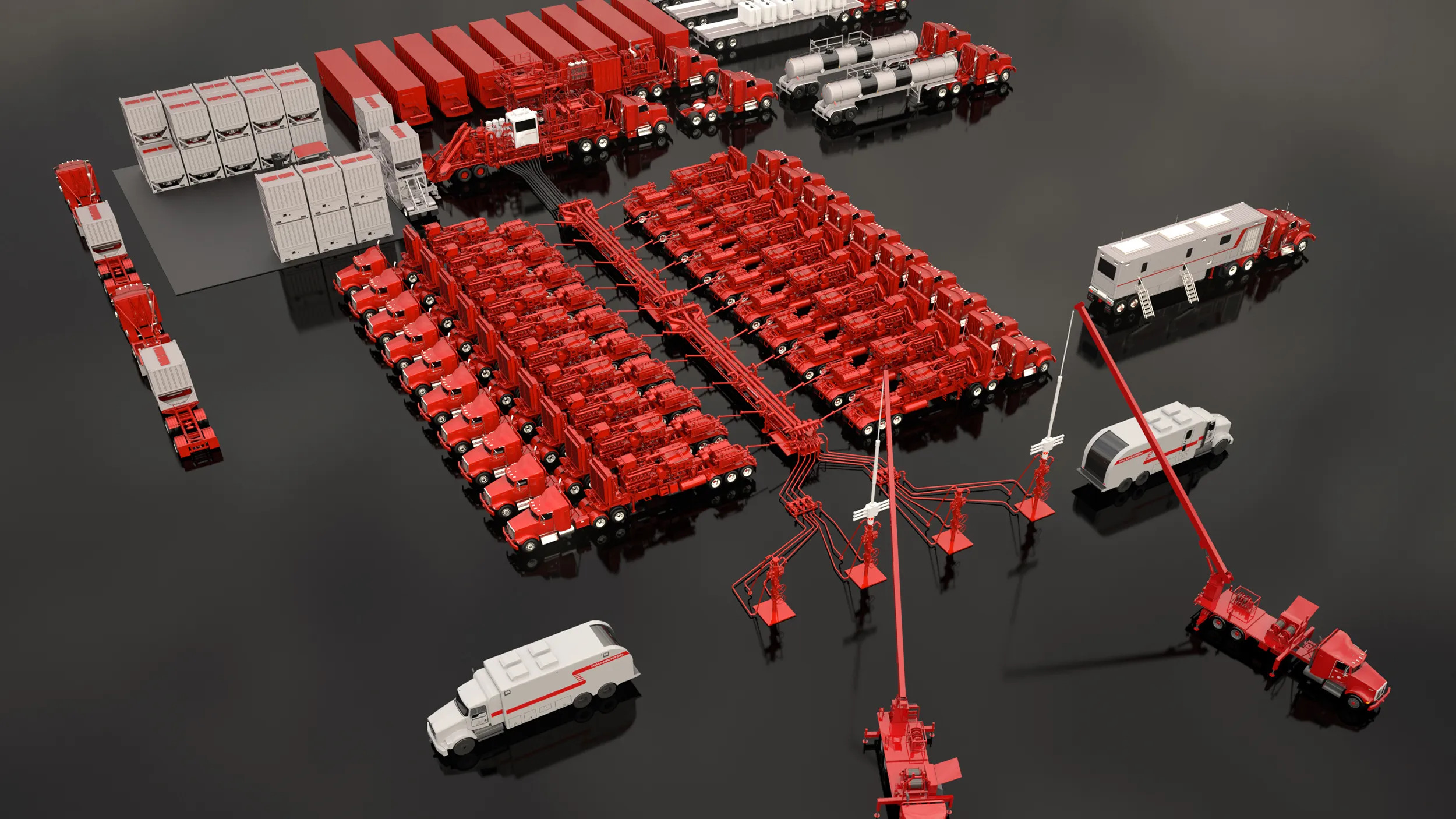
Danielle Fuselier, well construction director for North America Land at Baker Hughes, Neil Modeland, Halliburton’s senior business development technology manager, and Hart Energy Editorial Director Jordan Blum, moderator, during Hart Energy’s Gas+ Conference and Expo in Shreveport on March 28. (Source: Hart Energy)
Challenging as it is, the Haynesville Shale’s technical hurdles propel drilling and completions technology development that benefits the wider energy industry.
The Haynesville Shale, with its high temperatures and high pressures, is “not for the faint of heart,” Neil Modeland, Halliburton’s senior business development technology manager, said at Hart Energy’s DUG GAS+ Conference and Expo in Shreveport, Louisiana.
High temperatures, he said, have made it difficult to acquire completion diagnostics.
“Temperature has made it difficult for any sensors, any diagnostic measurements, to go down there,” he said, noting the need to rotate casing also rules out fiber optics on the backside of casing.
However, disposable fiber can be pumped into offset wells to help see frack interaction.
“You're not getting actual diagnostics from the well you're completing, but from that offset well,” Modeland said.
Recent advancements with flow-through cameras make it possible to image perforations in high-temperature locations, he said.
Danielle Fuselier, well construction director for North America Land at Baker Hughes, said the Haynesville presents similar challenges to drilling operations as it does to completions. As a result, drilling rates in the Haynesville have historically been slower than in other basins.
“We've gone from mile-a-day wells in Appalachia to now 2.5- to 3-mile-a-day wells. Here in the Haynesville, it's a good day if you can do a thousand feet,” she said.
Harsh Haynesville

One of the biggest challenges in the Haynesville involves technology that can survive the play’s harsh environment and deliver efficiencies common to other regions, Fuselier said.
Historically, the drill bit has been one of the limiters in drilling efficiency in the Haynesville, but advances in materials sciences, different geometries, non-planar shapes and flow that evacuates the cuttings all work to keep the cutting edge sharp and efficient, Fuselier said.
Drill bits have one of the fastest innovation cycles in drilling, she said, which has helped deliver some “phenomenal” gains in drilling. In the past, bits only lasted 2,000 ft to 3,000 ft when drilling the Haynesville’s intermediate section.
“We're doing 6,000 ft [intermediate section] runs with one bit,” Fuselier said. “From a technology standpoint, I'm pretty pumped about the future.”
Materials science has also helped with mud motors.
Temperatures of 340 F are “no longer that critical threshold, and as we've coupled that with new power section designs, the high temp is not necessarily what's holding us back in those spaces,” Fuselier said.
Advances in electronics have been a key enabler, she said.
“In terms of durable environment, we've come a long way. Electronics have become much smaller,” she said.
Baker Hughes has been developing high temperature capabilities, she said, and some early testing in Mexico and China generated promising results. She said Baker Hughes is in early stages of bringing some of that into the U.S. land market.
Under pressure
Completions in the Haynesville remain difficult, Modeland said.
“It's got probably the highest cost of completions just in the intensity of what we're doing. And then the pressure side, the horsepower requirement,” he said.
While the Haynesville has been home to some simul-fracs, they are not standard in that region like they are in the Permian where there’s tight well spacing, four- to six-well pads and shorter drill and completion cycle times, he said.
“You look at the Haynesville, the drill times and the completion times are a lot larger cycle time from capital spend to getting that return. Then the well spacing's wider. You might have a couple benches … but you don't have that massive amount of wells right there,” he said.
But he sees some opportunity with simul-frac and trimul-frac for the region.
“That would really be a next step game changer if we can get the logistics” sorted out for such operations, he said.
But one of the biggest opportunities in the Haynesville is refrac operations, he said. It helps, he added, that Haynesville has historically had some of the best performing refrac wells in North America.
“The cycle time on a new drill is so much longer than the cycle time on just relining an existing well with a liner and then doing a refrac,” Modeland said.
He believes drilling and completions across North America will continue to get deeper and exceed 400 F, but that the industry is innovative and creative enough to meet those challenges.
And the Haynesville Shale, where some of those technologies are being developed and finetuned, is “a good playground for helping out all the other areas as well,” he said.
Recommended Reading
E&Ps Posting Big Dean Wells at Midland’s Martin-Howard Border
2025-04-11 - Diamondback Energy, SM Energy and Occidental Petroleum are adding Dean laterals to multi-well developments south of the Dean play’s hotspot in southern Dawson County, according to Texas Railroad Commission data.
On The Market This Week (April 7, 2025)
2025-04-11 - Here is a roundup of marketed oil and gas leaseholds in the Permian, Uinta, Haynesville and Niobrara from select E&Ps for the week of April 7, 2025.
US Oil Rig Count Falls by Most in a Week Since June 2023
2025-04-11 - The oil and gas rig count fell by seven to 583 in the week to April 11. Baker Hughes said this week's decline puts the total rig count down 34 rigs, or 6% below this time last year.
IOG, Elevation Resources to Jointly Develop Permian Wells
2025-04-10 - IOG Resources and Elevation Resources’ partnership will focus on drilling 10 horizontal Barnett wells in the Permian’s Andrews County, Texas.
Saudi Aramco Discovers 14 Minor Oil, Gas Reservoirs
2025-04-10 - Saudi Aramco’s discoveries in the eastern region and Empty Quarter totaled about 8,200 bbl/d.
Comments
Add new comment
This conversation is moderated according to Hart Energy community rules. Please read the rules before joining the discussion. If you’re experiencing any technical problems, please contact our customer care team.





